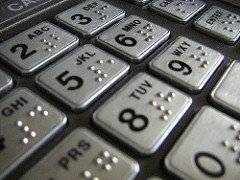May 2nd, 2016 marked the 50th anniversary of the invention of the Personal Identification Number (PIN) technology for cash machines. James Goodfellow was the man who came up with an idea of designing a system that accepted a machine readable encrypted card to which he added a numerical keypad into which a Personal Identification Number (PIN) had to be entered manually. He was an engineer working in Glasgow in the 1960’s who changed the face of banking industry with his invention that was simple to use for the customers and secure for the banks.
The US patent Number 3,905,461 titled ‘Access Control Equipment’ discloses a money-dispensing system which dispenses a pack of money upon request by an authorized bank-customer, the request involving presentation to a card-reader of the customer’s individually allotted punched-card, and operation of a set of ten push-buttons in accordance with the customer’s personal-identification number. The system dispenses a pack of money only if there is correspondence between this number entered by the push-buttons and a number that is read by the card-reader from the card.
This technology was applied for a patent on May 2nd, 1966 and is now accessed by millions of people around the world. UK Patent No. 1,197,183 also talks about this invention. This technology got a patent grant in many other countries too.
Claim 1 of the patent reads as:
Access-control equipment for selectively enabling access to a facility comprising: first means for receiving a coded token presented to the equipment to read from the received token information encoded thereon, second means that is operable manually for entering into the equipment a plural-character word, the word entered being dependent upon manual selection, third means that is selectively operable for enabling access to said facility, fourth means to effect comparison for correspondence between said information read from the token and said word entered into the equipment, said fourth means including means to operate said third means to enable access to said facility in dependence upon whether a predetermined correspondence exists between said information and said manually entered word, and recording means including a printer for providing a printed record of said information.
Let us thank James Goodfellow for this pivotal invention of Personal Identification Number and also instrumental in developing the automated teller machine (ATM) and making it an indispensable piece of technology.
Authored by Anjali Santhosh
Image source/attribution here, governed by Creative Common License CC BY 2.0



